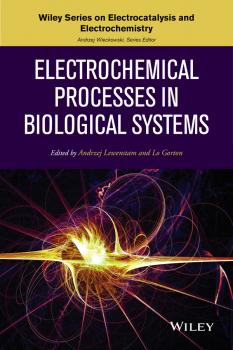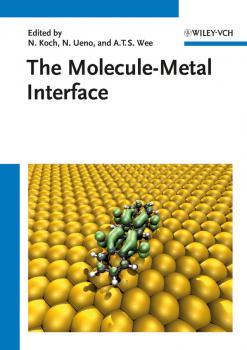Прочая образовательная литература
Различные книги в жанре Прочая образовательная литератураMachine Vision Algorithms and Applications
The second edition of this successful machine vision textbook is completely updated, revised and expanded by 15% to reflect the developments of recent years in the fields of image acquisition, machine vision algorithms and applications. The new content includes, but is not limited to, a discussion of new cameras and image acquisition interfaces, 3D sensors and technologies, 3D object recognition and 3D image reconstruction. The authors retain their balanced approach with sufficient coverage of the theory and a strong focus on applications. All examples are based on the latest version of the machine vision software HALCON 13, a trial version of which is available from the authors' website.
Nanoporous Catalysts for Biomass Conversion
A comprehensive introduction to the design, synthesis, characterization, and catalytic properties of nanoporous catalysts for the biomass conversion With the specter of peak oil demand looming on the horizon, and mounting concerns over the environmental impact of greenhouse gas emissions, biomass has taken on a prominent role as a sustainable alternative fuel source. One critical aspect of the biomass challenge is the development of novel catalytic materials for effective and controllable biomass conversion. Edited by two scientists recognized internationally for their pioneering work in the field, this book focuses on nanoporous catalysts, the most promising class of catalytic materials for the conversion of biomass into fuel and other products. Although various catalysts have been used in the conversion of biomass-derived feedstocks, nanoporous catalysts exhibit high catalytic activities and/or unique product selectivities due to their large surface area, open nanopores, and highly dispersed active sites. This book covers an array of nanoporous catalysts currently in use for biomass conversion, including resins, metal oxides, carbons, mesoporous silicates, polydivinylbenzene, and zeolites. The authors summarize the design, synthesis, characterization and catalytic properties of these nanoporous catalysts for biomass conversions, discussing the features of these catalysts and considering future opportunities for developing more efficient catalysts. Topics covered include: Resins for biomass conversion Supported metal oxides/sulfides for biomass oxidation and hydrogenation Nanoporous metal oxides Ordered mesoporous silica-based catalysts Sulfonated carbon catalysts Porous polydivinylbenzene Aluminosilicate zeolites for bio-oil upgrading Rice straw Hydrogenation for sugar conversion Lignin depolymerization Timely, authoritative, and comprehensive, Nanoporous Catalysts for Biomass Conversion is a valuable working resource for academic researchers, industrial scientists and graduate students working in the fields of biomass conversion, catalysis, materials science, green and sustainable chemistry, and chemical/process engineering.
Statistical Physics of Fracture, Beakdown, and Earthquake. Effects of Disorder and Heterogeneity
In this book, the authors bring together basic ideas from fracture mechanics and statistical physics, classical theories, simulation and experimental results to make the statistical physics aspects of fracture more accessible. They explain fracture-like phenomena, highlighting the role of disorder and heterogeneity from a statistical physical viewpoint. The role of defects is discussed in brittle and ductile fracture, ductile to brittle transition, fracture dynamics, failure processes with tension as well as compression: experiments, failure of electrical networks, self-organized critical models of earthquake and their extensions to capture the physics of earthquake dynamics. The text also includes a discussion of dynamical transitions in fracture propagation in theory and experiments, as well as an outline of analytical results in fiber bundle model dynamics With its wide scope, in addition to the statistical physics community, the material here is equally accessible to engineers, earth scientists, mechanical engineers, and material scientists. It also serves as a textbook for graduate students and researchers in physics.
Alternative Respiratory Pathways in Higher Plants
Rapid developments in molecular and systems biology techniques have allowed researchers to unravel many new mechanisms through which plant cells switch over to alternative respiratory pathways. This book is a unique compendium of how and why higher plants evolved alternative respiratory metabolism. It offers a comprehensive review of current research in the biochemistry, physiology, classification and regulation of plant alternative respiratory pathways, from alternative oxidase diversity to functional marker development. The resource provides a broad range of perspectives on the applications of plant respiratory physiology, and suggests brand new areas of research. Other key features: written by an international team of reputed plant physiologists, known for their pioneering contributions to the knowledge of regular and alternative respiratory metabolism in higher plants includes step-by-step protocols for key molecular and imaging techniques advises on regulatory options for managing crop yields, food quality and environment for crop improvement and enhanced food security covers special pathways which are of key relevance in agriculture, particularly in plant post-harvest commodities Primarily for plant physiologists and plant biologists, this authoritative compendium will also be of great value to postdoctoral researchers working on plant respiration, as well as to graduate and postgraduate students and university staff in Plant Science. It is a useful resource for corporate and private firms involved in developing functional markers for breeding programs and controlling respiration for the prevention of post-harvest losses in fruit, vegetables, cut flowers and tubers.
Handbook of Sea-Level Research
Measuring sea-level change – be that rise or fall – is one of the most pressing scientific goals of our time and requires robust scientific approaches and techniques. This Handbook aims to provide a practical guide to readers interested in this challenge, from the initial design of research approaches through to the practical issues of data collection and interpretation from a diverse range of coastal environments. Building on thirty years of international research, the Handbook comprises 38 chapters that are authored by leading experts from around the world. The Handbook will be an important resource to scientists interested and involved in understanding sea-level changes across a broad range of disciplines, policy makers wanting to appreciate our current state of knowledge of sea-level change over different timescales, and many teachers at the university level, as well as advanced-level undergraduates and postgraduate research students, wanting to learn more about sea-level change. Additional resources for this book can be found at: www.wiley.com\go\shennan\sealevel
Low-Frequency Electromagnetic Modeling for Electrical and Biological Systems Using MATLAB
Provides a detailed and systematic description of the Method of Moments (Boundary Element Method) for electromagnetic modeling at low frequencies and includes hands-on, application-based MATLAB® modules with user-friendly and intuitive GUI and a highly visualized interactive output. Includes a full-body computational human phantom with over 120 triangular surface meshes extracted from the Visible Human Project® Female dataset of the National library of Medicine and fully compatible with MATLAB® and major commercial FEM/BEM electromagnetic software simulators. This book covers the basic concepts of computational low-frequency electromagnetics in an application-based format and hones the knowledge of these concepts with hands-on MATLAB® modules. The book is divided into five parts. Part 1 discusses low-frequency electromagnetics, basic theory of triangular surface mesh generation, and computational human phantoms. Part 2 covers electrostatics of conductors and dielectrics, and direct current flow. Linear magnetostatics is analyzed in Part 3. Part 4 examines theory and applications of eddy currents. Finally, Part 5 evaluates nonlinear electrostatics. Application examples included in this book cover all major subjects of low-frequency electromagnetic theory. In addition, this book includes complete or summarized analytical solutions to a large number of quasi-static electromagnetic problems. Each Chapter concludes with a summary of the corresponding MATLAB® modules. Combines fundamental electromagnetic theory and application-oriented computation algorithms in the form of stand alone MATLAB® modules Makes use of the three-dimensional Method of Moments (MoM) for static and quasistatic electromagnetic problems Contains a detailed full-body computational human phantom from the Visible Human Project® Female, embedded implant models, and a collection of homogeneous human shells Low-Frequency Electromagnetic Modeling for Electrical and Biological Systems Using MATLAB® is a resource for electrical and biomedical engineering students and practicing researchers, engineers, and medical doctors working on low-frequency modeling and bioelectromagnetic applications.
Evaluating Online Teaching. Implementing Best Practices
Create a more effective system for evaluating online faculty Evaluating Online Teaching is the first comprehensive book to outline strategies for effectively measuring the quality of online teaching, providing the tools and guidance that faculty members and administrators need. The authors address challenges that colleges and universities face in creating effective online teacher evaluations, including organizational structure, institutional governance, faculty and administrator attitudes, and possible budget constraints. Through the integration of case studies and theory, the text provides practical solutions geared to address challenges and foster effective, efficient evaluations of online teaching. Readers gain access to rubrics, forms, and worksheets that they can customize to fit the needs of their unique institutions. Evaluation methods designed for face-to-face classrooms, from student surveys to administrative observations, are often applied to the online teaching environment, leaving reviewers and instructors with an ill-fitted and incomplete analysis. Evaluating Online Teaching shows how strategies for evaluating online teaching differ from those used in traditional classrooms and vary as a function of the nature, purpose, and focus of the evaluation. This book guides faculty members and administrators in crafting an evaluation process specifically suited to online teaching and learning, for more accurate feedback and better results. Readers will: Learn how to evaluate online teaching performance Examine best practices for student ratings of online teaching Discover methods and tools for gathering informal feedback Understand the online teaching evaluation life cycle The book concludes with an examination of strategies for fostering change across campus, as well as structures for creating a climate of assessment that includes online teaching as a component. Evaluating Online Teaching helps institutions rethink the evaluation process for online teaching, with the end goal of improving teaching and learning, student success, and institutional results.
Electrochemical Processes in Biological Systems
The first book to provdie a comprehensive look at bioenergetics, the energy flow in living systems, by studying ion exchange and electron transfer processes in biological membranes and artificial bio-films, and how these processes contribute to developing modern biosensor and ion-sensor technology, as well as biofuel cells. The book: Discusses the ion fluxes and electron transfer processes in biological membranes and artificial bio-films Provides an in-depth description of the processes at the interface between the membrane/film and substrate electrode Is the first of its kind to provide a comprehensive look at how these processes are understood in biology of living cells Addresses how these processes contribute to developing modern biosensor and ion-sensor technology, as well as biofuel cells
The Molecule-Metal Interface
Reviewing recent progress in the fundamental understanding of the molecule-metal interface, this useful addition to the literature focuses on experimental studies and introduces the latest analytical techniques as applied to this interface. The first part covers basic theory and initial principle studies, while the second part introduces readers to photoemission, STM, and synchrotron techniques to examine the atomic structure of the interfaces. The third part presents photoelectron spectroscopy, high-resolution UV photoelectron spectroscopy and electron spin resonance to study the electronic structure of the molecule-metal interface. In the closing chapter the editors discuss future perspectives. Written as a senior graduate or senior undergraduate textbook for students in physics, chemistry, materials science or engineering, the book's interdisciplinary approach makes it equally relevant for researchers working in the field of organic and molecular electronics.
Protein Moonlighting in Biology and Medicine
The past 25 years has seen the emergence of a wealth of data suggesting that novel biological functions of known proteins play important roles in biology and medicine. This ability of proteins to exhibit more than one unique biological activity is known as protein moonlighting. Moonlighting proteins can exhibit novel biological functions, thus extending the function of the proteome, and are also implicated in the pathology of a growing number of idiopathic and infectious diseases. This book, written by a cell biologist, protein evolutionary biologist and protein bioinformatician, brings together the latest information on the structure, evolution and biological function of the growing numbers of moonlighting proteins that have been identified, and their roles in human health and disease. This information is revealing the enormous importance protein moonlighting plays in the maintenance of human health and in the induction of disease pathology. Protein Moonlighting in Biology and Medicine will be of interest to a general readership in the biological and biomedical research community.









